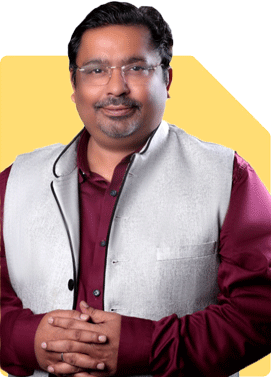Hello ,
I am investing 55000 in mutual fund from last 8 years and total portfolio as of now in 30 lacs ....pls confirm if this ok to build a corpus of 5 crores till 20 years of my investment in SIP...
Ans: You have been investing Rs 55,000 monthly in mutual funds for the last eight years. Your current portfolio value is Rs 30 lakhs. Congratulations on your commitment to long-term investments!
Let’s assess whether this approach will help you reach your goal of Rs 5 crore in 20 years.
The key question is whether Rs 55,000 monthly can grow to Rs 5 crore in another 12 years. This will depend on factors like the rate of return, investment strategy, and market conditions.
Assessing Portfolio Growth Potential
Your portfolio’s future growth will depend largely on the compounding power of your mutual fund investments. If we assume an average annual return, this could give you a rough estimate.
However, mutual fund returns can fluctuate based on market conditions. Therefore, it is essential to assess your portfolio regularly and adjust if necessary. A Certified Financial Planner (CFP) can help review your portfolio’s performance.
You can increase your chances of achieving Rs 5 crore by focusing on these key factors:
Consistent SIPs: Staying consistent with SIP investments, like you have done, ensures that you benefit from rupee-cost averaging. This helps reduce market volatility over time.
Increase SIP Contribution: Consider increasing your SIP amount by a certain percentage each year. For example, if you increase it by 10%, your investments will have more growth potential.
Actively Managed Funds: Actively managed mutual funds offer potential for higher returns compared to index funds. Fund managers can adjust portfolios based on market trends, which may boost returns in certain conditions. Since you are focused on mutual funds, actively managed funds can give you better flexibility and performance.
Rebalancing: You may need to rebalance your portfolio from time to time. Market conditions and personal life events change, and your portfolio should adapt to those changes.
Active Vs. Passive Funds: Why Actively Managed Funds Matter
Some investors choose index funds, but there are limitations with this option. While index funds track a benchmark, actively managed funds offer flexibility. Skilled fund managers can make dynamic adjustments to take advantage of market opportunities.
In actively managed funds, there is a potential for higher returns over time. Fund managers can move assets based on market trends and forecasts. For long-term investors like you, this flexibility is essential to optimize growth.
Why Active Funds Can Be More Beneficial for You:
Higher Return Potential: Fund managers actively select stocks that are expected to outperform. This can generate higher returns compared to index funds.
Better Risk Management: In actively managed funds, fund managers can shift strategies based on market conditions to manage risks more effectively.
Opportunity for Mid-Small Cap Exposure: Actively managed funds can give you better exposure to mid-cap and small-cap stocks. This can diversify your portfolio and enhance returns.
The Benefits of Regular Plans Over Direct Plans
If you are currently investing in direct mutual fund plans, you may want to reconsider. While direct plans have lower expense ratios, they often lack the guidance and personalized service of regular plans.
By investing in regular plans through a Certified Financial Planner (CFP), you benefit from:
Expert Guidance: A CFP can tailor your investment portfolio to your financial goals. They provide strategic adjustments as needed, ensuring your investments align with your objectives.
Portfolio Management: Having a CFP monitor your portfolio’s performance helps ensure it stays on track for your Rs 5 crore goal. They provide ongoing advice on fund selection, asset allocation, and rebalancing.
Tax Efficiency: A CFP can guide you on optimizing tax efficiency in your mutual fund investments. They provide insights on capital gains taxes and the best ways to minimize your tax burden.
Overall, while direct plans may seem cost-effective, regular plans with the help of a CFP offer long-term value. The added support and guidance ensure your investments are working optimally for you.
Optimizing Your Asset Allocation
An essential part of building wealth is a balanced asset allocation. Depending on your risk tolerance, age, and financial goals, the right balance of equity, debt, and other assets is key.
Equity Exposure: Since your goal is long-term wealth creation, a higher exposure to equity mutual funds is generally advisable. Equities have historically provided higher returns over long periods, which could help you reach your Rs 5 crore target faster.
Debt Exposure: Debt mutual funds can provide stability to your portfolio. You can use debt funds to reduce overall portfolio risk, especially as you get closer to your goal. Debt funds provide more predictable returns but lower growth compared to equities.
Balanced Advantage Funds: If you want a blend of equity and debt, balanced advantage funds offer automatic asset allocation. These funds adjust between equity and debt based on market conditions, giving you a balanced risk-return profile.
Importance of Tax-Efficient Investment
Taxation plays a crucial role in the net returns you receive. Understanding how mutual fund taxation works is vital:
Equity Mutual Funds: Long-term capital gains (LTCG) are taxed at 12.5% for gains above Rs 1.25 lakh annually. Short-term capital gains (STCG) are taxed at 20%.
Debt Mutual Funds: Gains from debt funds are taxed based on your income tax slab. This includes both LTCG and STCG.
To optimize your returns, consider working with a CFP who can help you plan tax-efficient withdrawals when needed. Tax-efficient investment strategies can maximize your net returns and prevent you from losing significant value to taxes.
Preparing for Future Financial Milestones
As you approach the final 12 years of your investment timeline, consider whether your investment strategy aligns with future financial needs. You may want to factor in:
Retirement Planning: If your Rs 5 crore corpus is intended for retirement, it’s crucial to adjust your investments as you near your goal. A more conservative approach might be necessary as you approach retirement age. You should avoid taking unnecessary risks close to your goal.
Education or Major Expenses: If you have other financial goals, like children’s education or a home purchase, you may want to allocate a portion of your portfolio to those goals. Ensuring that you have adequate liquidity when needed is essential.
Inflation Protection: Over time, inflation reduces the purchasing power of your money. To ensure your Rs 5 crore goal meets your future needs, you should factor in inflation. Equities generally provide a hedge against inflation, making them an essential part of your portfolio.
Monitoring and Adjusting Your Investment Strategy
It is essential to monitor your portfolio regularly to ensure it remains aligned with your financial goals. You may need to adjust your investment strategy based on:
Changes in Market Conditions: Global and domestic markets can impact the returns of your mutual funds. A CFP can help make timely adjustments to your portfolio.
Changes in Your Financial Goals: Life circumstances may change, requiring adjustments to your investment approach. A CFP will help you reassess your goals and adjust your portfolio as needed.
Regular Reviews: You should review your portfolio at least once or twice a year with your CFP. This ensures that your investments continue to work toward your Rs 5 crore goal.
Avoiding Common Investment Pitfalls
To achieve your goal, it is essential to avoid some common investment mistakes. These include:
Emotional Investing: Avoid making investment decisions based on market volatility or short-term trends. Stick to your long-term investment plan and consult your CFP when in doubt.
Lack of Diversification: Focusing on a single asset class or fund can expose you to unnecessary risk. Ensure your portfolio is diversified across multiple asset classes, sectors, and geographies.
Ignoring Taxation: Be mindful of tax implications when making withdrawals. Optimizing tax-efficient strategies is crucial to maximizing your net returns.
Overlooking Rebalancing: As market conditions change, your portfolio may need adjustments. Rebalancing ensures your asset allocation remains aligned with your risk tolerance and financial goals.
Finally
Your commitment to building a Rs 5 crore corpus is commendable. You’ve already built a Rs 30 lakh portfolio, which is a great start.
To reach your Rs 5 crore goal, continue your monthly SIPs, consider increasing your contributions, and optimize your investment strategy. Stay disciplined and focused on long-term growth.
Consult with a Certified Financial Planner to review your portfolio periodically, manage risks, and adjust for any market changes.
Best Regards,
K. Ramalingam, MBA, CFP,
Chief Financial Planner,
www.holisticinvestment.in
https://www.youtube.com/@HolisticInvestment























